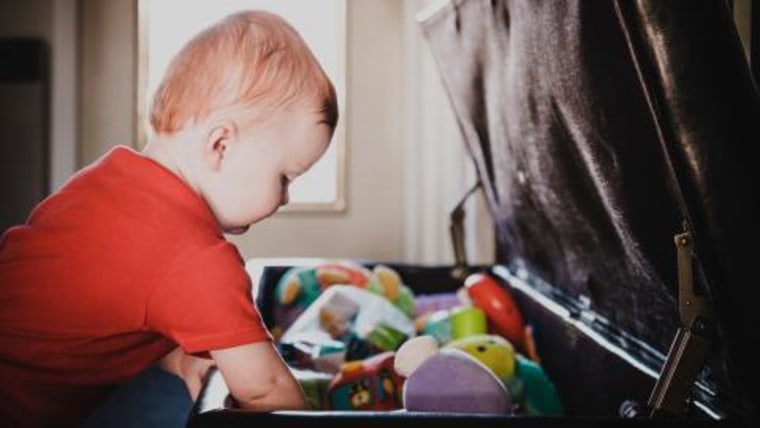For any parent who’s ever felt like they were drowning in a sea of toys or regularly worries about spoiling their child early on — think Veruca Salt in the film “Willy Wonka and the Chocolate Factory” — this revelation might come as welcome news.
A lack of toy options can actually lead to a better play experience for toddlers, according to a new study developed by researchers at The University of Toledo.

Armed with a selection of toys, four researchers tested the following hypothesis: “An environment with fewer toys will lead to higher quality of play for toddlers.” They sampled a group of 36 toddlers between the ages of 18 and 30 months (nine boys and 27 girls) and observed their playing patterns twice: once when presented with a group of four toys, and again with a larger group of 16 toys.
You’d think more options would equal more fun, but when presented with fewer toys, the toddlers were actually more focused and creative. Turns out fewer toys allow for “deeper, sophisticated play” and create fewer distractions, according to the study.
It sounds similar to Marie Kondo's method of only keeping items that "spark joy."
Alexia E. Metz, Ph.D., a University of Toledo associate professor who co-wrote the study, told TODAY Home that giving your child fewer toys might just support the development of focused attention, motor skills, cognitive concepts and creativity.
“I think the main takeaway for parents is that if they give their toddlers some opportunities to play in a setting with fewer distractions, including having fewer toys out at any one time, they may notice that their kiddos play with each toy longer and in increasingly creative ways,”she said.
Toddlers are just starting to gain control over where to direct their attention, Metz explained, and like the rest of us, they’re pretty susceptible to distractions (AKA bright, shiny toys). “When there are fewer distractions (including the temptation of other fun toys!), they can focus on the toy at hand,” she said. “This gives them time to explore everything they can do with it, playing with it in more and more elaborate and creative ways.”
This is what researchers call exploratory play, and it gives children the opportunity to discover the world around them and build skills and knowledge along the way.
Before undertaking a drastic purge of your child’s toy collection, though, Metz suggests rotating the toys you offer your child. See how they respond, and you just might discover that less really is more!